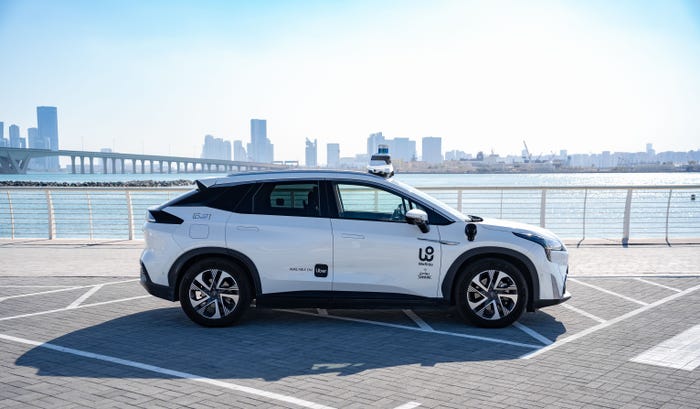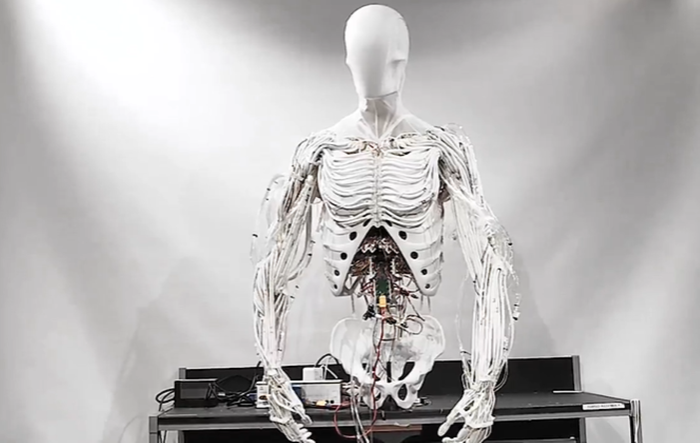How IoT is Making Hospitals Smarter, Safer
Cognosos CPO Adrian Jennings talks about how sensor devices and asset tracking are helping hospitals become more efficient

Hospitals across the U.S. are set to see longer wait times this winter. Life science analytics company Airfinity estimates admissions will reach 1.15 million, more than three times higher than they saw during the pre-pandemic virus season.
Oftentimes these delays are caused by a seemingly mundane problem, missing medical equipment. However, the knock-on effect can be significant, causing bottlenecks and patient delays. Coupled with the health care industry seeing ongoing staff shortages and instances of violence against staff on the rise, addressing this problem could have significant effects on day-to-day operations for both staff and patients alike.
According to Adrian Jennings, chief product officer of sensor tech provider Cognosos, advances in IoT technology can solve this issue, helping medical staff locate, track and manage their equipment in real time.
Deploying IoT in Health Care
“The health care industry was one of the early adopters of asset tracking solutions as it’s kind of the poster child for complex critical processes, with lots of moving parts,” said Jennings. “Cognosos came to the industry at a point where the technology had already failed to deliver the solutions needed to provide precise, real-time data.”
Previously, organizations could only deploy asset tracking tech if they were willing to spend big. Then, with the advent of Bluetooth businesses across industries, they were able to achieve a level of asset tracking and operational transparency with ease, though with low accuracy levels.
With the rise of AI and cloud computing, Jennings said these two technologies could be combined to provide the precise, real-time data needed to make a difference without incurring high costs.
“So you had high cost, high value or low cost, low value,” said Jennings. “What you wanted was low cost, high value. That's where the sweet spot is and that’s where we come in. We used AI, machine learning and cloud technology to reshape the industry.
“We still use Bluetooth, but we apply machine learning to triangulate signal strength and gain accurate insight into where assets and people actually are within a hospital. Kind of like GPS but for indoors.”
Cognosos installs Bluetooth beacons down the hallways of a hospital and then uses AI to teach location tags what the beacons sound like when you’re in each room.
“I don't know where in the room you are, but I don't care,” said Jennings. “I know exactly which room you're in just by using Bluetooth, and I can do it with very little infrastructure. So that's the game changing piece. We’re basically turning crappy sensors into awesome sensors with machine learning.”
Currently, hospitals purchase vast amounts of medical equipment to try and mitigate the regular misplacement of devices, but Jennings said the model is unsustainable and that asset tracking is the logical solution.
“Overall, the national health system is struggling,” said Jennings. “There’s a question of budget - you can’t just go on buying more and more equipment to make sure staff always have access to something. It’s a path to failure. Inevitably what starts to happen is all these inefficiencies begin to bang up against their end stops. The industry has to look to improve their processes to deal with the inefficiencies.”
Obstacles to IoT Deployment
Looking more broadly, Jennings said the health care industry has been slow to adopt certain technologies due to the difficulty of deploying them both financially and logistically.
“In hospitals, cost is certainly a big deal,” he said. “It’s also very difficult to physically go and install equipment in a hospital.
“How do you deploy IoT systems in a sterile hospital with all the privacy concerns that everybody naturally has? And how do you physically do that? You can't shut down entire wings of a hospital to fit it with sensors. That's a revenue-producing part of the hospital. So it's very expensive and it’s very disruptive.”
Following COVID, however, there has been a renewed interest in smart technologies to connect and streamline operations, with investments expected to rise in this sphere.
“COVID actually slowed down investment in new tech,” said Jennings. “Because for that period, everyone was focused on keeping their head above water. And nobody wanted to talk about investing in new technologies. It created a pause, and now this pause is over.
“COVID demonstrated a lot of inefficiencies in a crazy nonlinear way that broke the system pretty dramatically. But now people are asking what we have to do better so that next time we're more prepared? There's been a new resurgence of appetite for advanced technology investment.”
The promise of IoT and other sensor systems, in this context, is to improve efficiencies by providing insight into each step of daily operations to identify bottlenecks that can then be addressed.
“No human could ever have the level of insight into an operation to coordinate it as a whole,” said Jennings. To do it, you have to have an IoT solution.”
While the need for asset tracking is an evident necessity, the primary motivator for health care’s adoption of IoT tech, according to Jennings, is safety.
Safety Sensors in Health Care
“There isn't a hospital out there that doesn't realize it needs an asset tracking solution, but it’s still something that’s nice to have rather than an essential,” said Jennings. “You can still technically run a hospital without it. But leveraging these tools for safety is critical.
“There’s a crisis in health care. There isn’t enough staff, and people are leaving the job partially because they don’t feel safe. So we’re seeing a lot of demand and adoption around IoT devices for safety.”
Such safety solutions would include monitoring staff and patients themselves. Unsurprisingly, despite the industry's need, privacy concerns around how to track people anonymously have caused a delay in the rollout of this tech.
Now, Cognosos is working on a safety sensor solution to meet this need, with a focus on minimizing the amount of individual data gathered to make it work. One benefit, Jennings said, is that the infrastructure needed for both asset tracking and personal safety in a hospital (or indeed other business) environment is the same.
“The beauty is that asset tracking and safety solutions use the same infrastructure in this context, so you could layer in asset management once you've solved the security problem,” said Jennings. “So we see the expansion of IoT actually being led by those safety applications.
“The meat and potatoes of visibility really is around asset management. But the very noticeable, much more visceral part of it is around safety and process efficiency. Today we're just tracking assets, but next, we’ll be rolling out a safety solution and expanding into European markets.”
About the Author
You May Also Like








